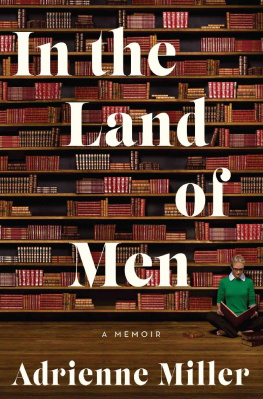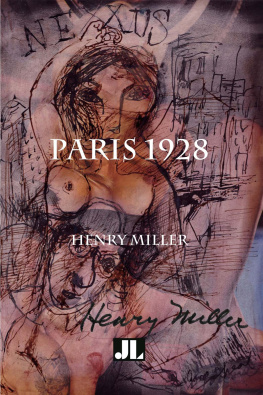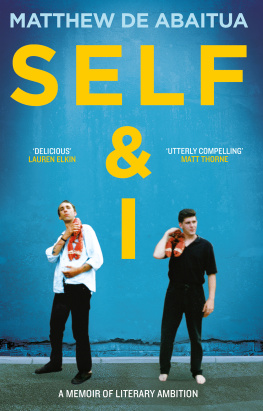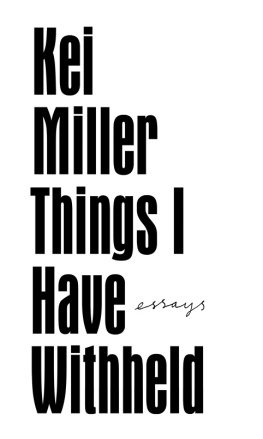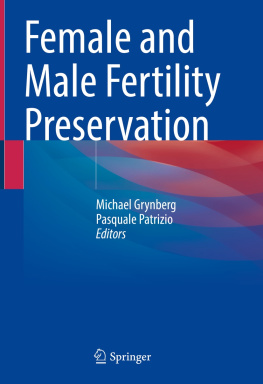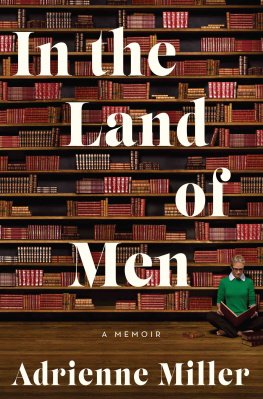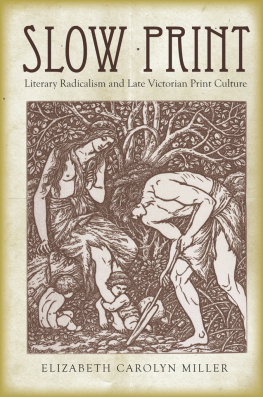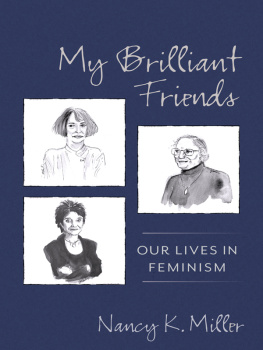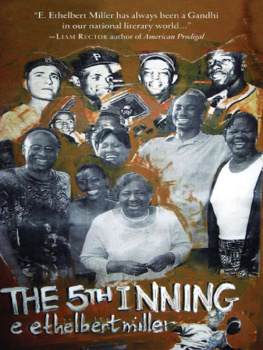
For Joe
Contents
A t twenty-five, I became the first female literary and fiction editor of Esquire . It was 1997 and Esquire had for decades been one of the countrys most significant magazines; home to the writers who defined masculinity (if you will excuse the term) for the twentieth century: Ernest Hemingway, Norman Mailer, Raymond Carver, and the practitioners of New Journalism.
My mission was to help the magazine find its new voice. I understood that I was following in the footsteps of two legendary editors, Gordon Lish and Rust Hills, men of extraordinary vision and taste. Of course, I knew that I was, in every way, a baffling choice for the job: I was a woman, I was notably young, and I had had no sparkling editorial career behind me. But I was passionate about writers and writing, I was eager-eyed, and, I believed, I had taste.
During my tenure, I discovered many new writers, I worked with many giants. But it was with the formally audacious David Foster Wallace story Adult World, which, according to David, every other magazine had rejected, that my journeyprofessional, personal, artisticreally began. David and I met in 1998. I was twenty-six and he was thirty-six. I had been at Esquire only a few months and was doing what I could to refurbish the magazines moribund literary section. Infinite Jest had been published two years before and David was on his way to becoming the most influential and imitated American fiction writer since Hemingway.
I would acquire and edit four of Davids stories for Esquire . I read his manuscripts, we were friends, we dated. After his suicide, my private approach to him, already well honed during his lifetime, became ever more entrenched; my preferred modes: avoid, shut down, and avoid some more. I couldnt talk about him, I couldnt read anything about him, and I couldnt read his work. I certainly couldnt write about him. God knows I never planned to, and couldnt have imagined a world in which I ever would.
What has changed in my thinking? So much has been bothering me in the eleven years since Davids death. Its nothing new to suggest that as his persona has been processed by the culture industry he so loathed, the living man has faded from sight. Nearly everyone gets him wrongbut thats beside the point. Whether hes presented as a hero or a monster, hes been reduced to a darkly glamorous suicide doll. There are also significant lacunae in the public record of Davids life and in the public record of his evolving thinking about his own work during the period of time we were friends.
With these thoughts in mind, I started writing about what it was like for me to know him, but also, crucially, about my own personal odyssey: a young woman trying to do good work and trying to get herself taken seriously in a world of men.
During my career, I would learn about the profoundly compromised men who make the art we venerate, and I would learn about protecting the egos of these men. I would learn about power. That was the world I lived in. Little did we know then that we were in the last days of a dying order. All empires collapse eventually, of course.
AM, August 2019
I n my office at Esquire was a hand-me-down frame, bequeathed from fiction editors of the past. It was made of chrome, complicatedly beat up, and held a piece the magazine had run in the eighties called Whos Who in the Cosmos 1987. When I started my job as the magazines literary and fiction editor, I found this frame lying on the floor underneath my desk.
The Whos Who, published in the August 1987 summer fiction issue, was part of a special section that month called The Literary Universe. It was one of those exercises in classification and pigeonholing that magazines have done since the beginning of time, a power chart of the eras so-called literary establishment. Cover stars from this issue: John Updike and William Styron. The Whos Who map, which looked kind of like a kids outer space place mat, was a three-page gatefold with hundreds of floating, context-free names of various writers, editors, agents, critics, teachers, and publishers grouped in categories such as Rising Stars, Falling Stars, Out of Orbit, The Parallel Universe, and Lost in Space. You get the drift. Or maybe you dont. Probably you shouldnt. With all due respect to the legendary Esquire fiction editor L. Rust Hills, who compiled the thing as a sort of reprise to a literary power chart the magazine published in 1963, I could never make heads or tails of it. I can guarantee that few Esquire readers of the eighties could, either.
One thing was clear: the place to be on the chart was The Red-Hot Center. As Rust had written in his introduction, the persons located there were generating enormous amounts of heat. The fiction writers placed within that particular red-hot sun (they are all dead now, the sun a graveyard) were Saul Bellow, John Updike, Raymond Carver, Elmore Leonard, and Norman Mailer. Toni Morrison, probably the most important living American novelist, was relegated to a moon in deep space, mentioned only in a roundup of her agencys clients. The red-hot center did contain the names of three women, but none of them were novelists and only one was a writera book critic; the other two were a literary agent and a socialite. And they are all still very much alive, these three, but thats no real surprise. The women always do seem to persevere in the end.
I never knew what to do with the frame. I loathed the literary star system and everything this chart represented, and there was no way I was ever going to hang it on my wall. But I could never quite bring myself to toss it, either. I tried to give it away, but I never found any takers, not even among the more seasoned Esquire veterans (meaning: Rust Hills, who never seemed to want to take credit for his own creation). So, during the years I had that office, the framed Whos Who existed in a kind of purgatory, lying faceup on the bottom shelf of a bookcase behind my desk, with books and submissions and whatnot stacked on top of it.
When I started the job in 1997, no single media outlet could presume the Literary Universewide authority Esquire had attempted to claim for itself a decade before. Was there anything vaguely resembling a red-hot center or even a general literary universe anymore? And if there was, was I now somehow, at age twenty-five, as Esquire s literary editor, an improbable gatekeeper to it? (Or warden? Den mother, maybe?)
At the bottom of the page was a large catchall category called On the Horizon, and included in it was a twenty-five-year-old novelist named David Foster Wallace, who had just published his first book. Eleven years after his Literary Universe cameo, David was in my office, sitting in the squat red velvet swivel chair across from my desk, with the frame in his lap.
God, I hate this thing, he said.
Davids hair was cut short underneath his blue bandanna, his complexion was turbulent, and he had, as my grandmother liked to say about any white person whod been in the sun, good color. I considered him for a moment.
Youre looking very tan right now, David.
The brown-gold Wallace eyes gleamed deviously. I would edit four short stories of Davids for Esquire . He was the fiction writer with whom Id work the most frequently at the magazine.
Well, I am half quadroon, he said.
David was using my purple-and-white plastic TRUMP TAJ MAHAL cupwhich Id acquired two years before on an ill-advised trip to Atlantic City and had brought to the office for reasons unknownas his tobacco cuspidor. Patiently, he waited for me to figure out what a half quadroon was.
Octoroon, I said finally.
Touch, he replied.
I had been amazed, and not in an entirely good way, how David was able to recollect so many details about the Literary Universe chartwho was situated where; the names, for example, of the writers placed in the Falling Stars category, and the distinction between the Rising Stars grouping and Davids own On the Horizon. (The Rising Stars category had Julian Barnes, Richard Ford, and Louise Erdrich in it and was the far better place to be.) The truth was that I hadnt known much at all about the notorious history of the Literary Universe, which had been seemingly scrubbed from the Esquire institutional memory, or anything about what a toxic plum cake it had been in literary circles, before David told me about it. According to David, writers and editors had spent the summer of 1987 nattering away about the Literary Universeeveryone joined in the belief that the thing was shallow, cynical, and ridiculous... yet everyone knew exactly where, or if, he was placed on it. The most Id ever heard, or would ever hear, from anyone about the Literary Universe was from David.
Next page
